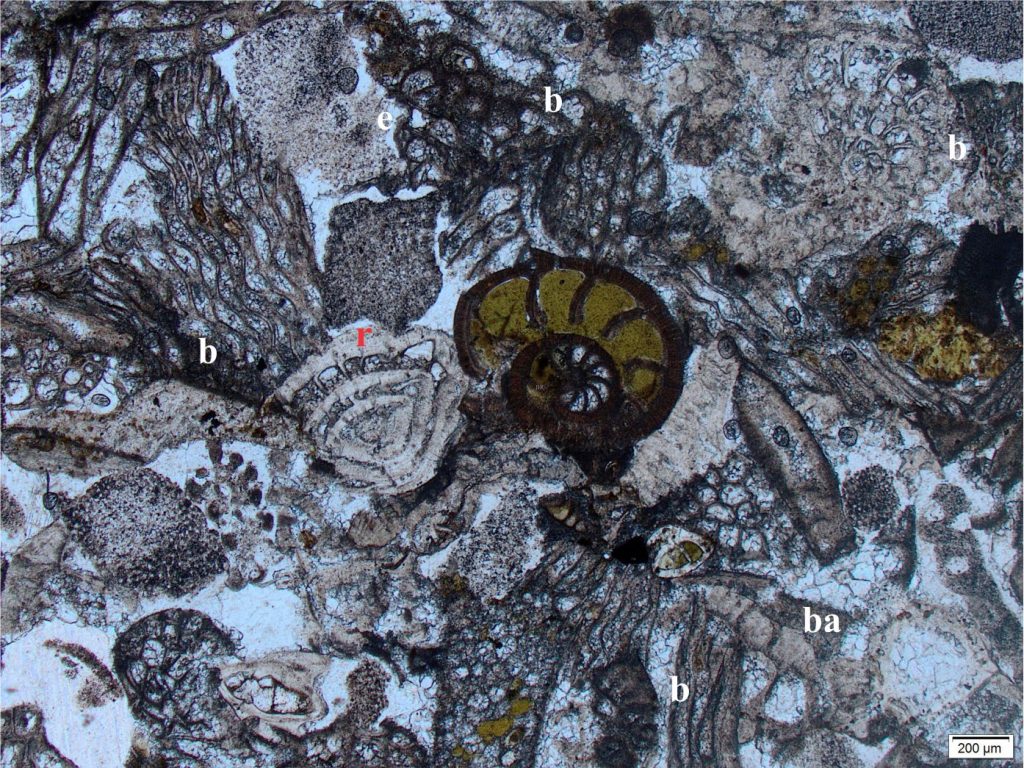
Two important contributors to bioclastic limestones – foram tests and skeletal sponge spicules
Foraminifera
Foraminifera (forams) are single celled, marine to brackish water organisms that inhabit the photic zone (their diet consists of algae, diatoms, and other photic zone micro-organisms). They construct exoskeletons (tests) either by secreting calcium carbonate, or by gluing together silt and clay-sized sediment particles (agglutinated forms); there is also a small group of chitinous forms. They are divided into two broad groups: planktic species that spend their lives within the water column, and benthic forms that live on or in the sea floor sediment. A few species encrust other larger shells, corals, and bedrock. Benthic forams are by far the largest and most diverse group.
Forams are sensitive to changes in environmental conditions such as substrate, water depth, salinity, and temperature and thus are excellent paleoenvironmental and paleobathymetric indicators. Their sensitivity to temperature is also reflected in the partitioning of stable oxygen and carbon isotopes, providing excellent proxies for oceanic paleotemperatures. They are also one of the most important fossil groups for high resolution biostratigraphy, particularly in Cretaceous and Cenozoic rocks, a development for which the oil exploration industry can claim much credit.
Forams are microscopic, mostly less than a millimetre across, except for a few species like the iconic Nummulites that in some cases can exceed 50mm diameter. You will need a decent binocular microscope to get any detail out of them; modern foram studies routinely use a scanning electron microscope for species ID.
The variety of test form ranges from single chambered species to those with multiple chambers arranged in linear and flat spiral arrays, and conical spiral forms that look superficially like small gastropods. Some of the more common forms are shown below.
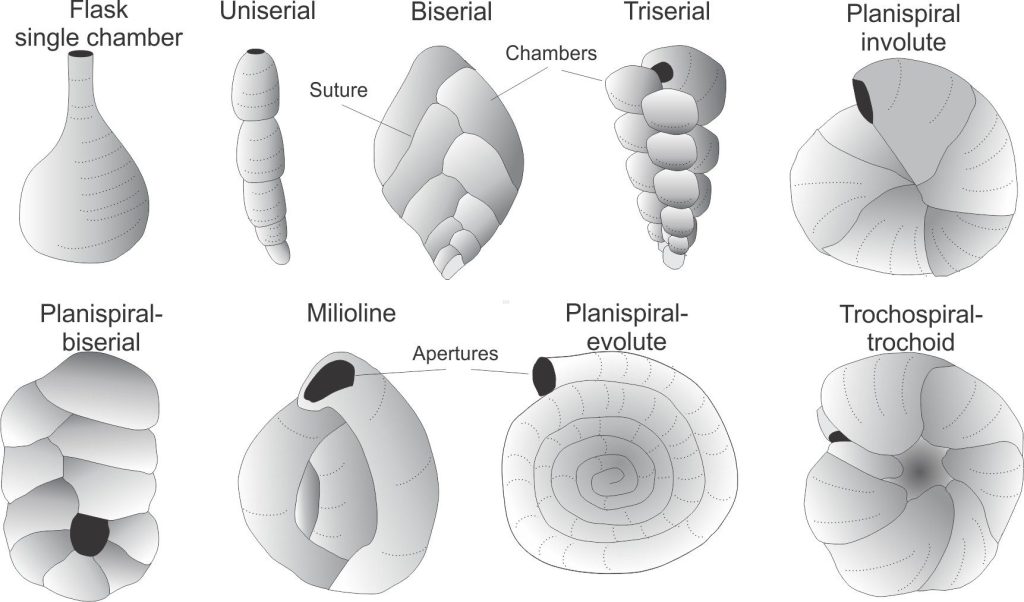
Foram classification is based on test morphology, wall structure, and aperture geometry.
The test morphology one sees in thin section depends on the orientation of the fossil. In this situation, the structure of the test wall can be an important guide, at least to the taxonomic level of order.
There are four main orders
Textulariids: Agglutinate species grow their tests by ‘gluing’ together small sedimentary particles with calcite or silica cement. In thin section they typically appear dark, almost isotropic, although silt-sized quartz, feldspar, and fossil fragments are usually visible.
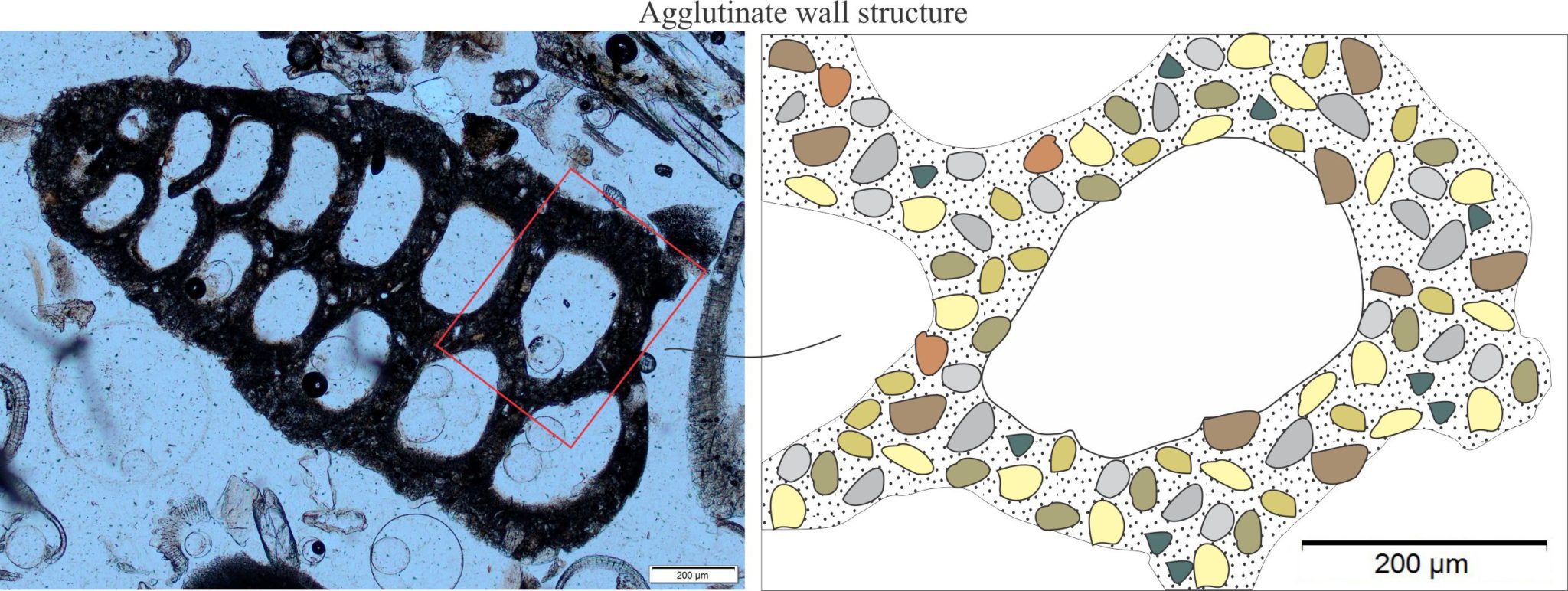
Rotalìids (Hyalina – hyaline means almost transparent). Rotaliids secrete either calcite or aragonite (never a mix of the two) in crystallites arranged in radial fashion with c-axes normal to the test wall. A new layer of radial crystals is precipitated for each chamber addition. Thus, in thin section the foram test walls appear layered. Under crossed polars there may be a pseudo-extinction cross that will rotate with the microscope stage.
This group includes benthic and planktic species, including well-known genera like Nummulites and Globigerina. Test walls have fine perforations (perforate) – these are easy to see in planktic forms. Some species contain microgranular calcite, and a few have walls constructed of large, perforated crystals.

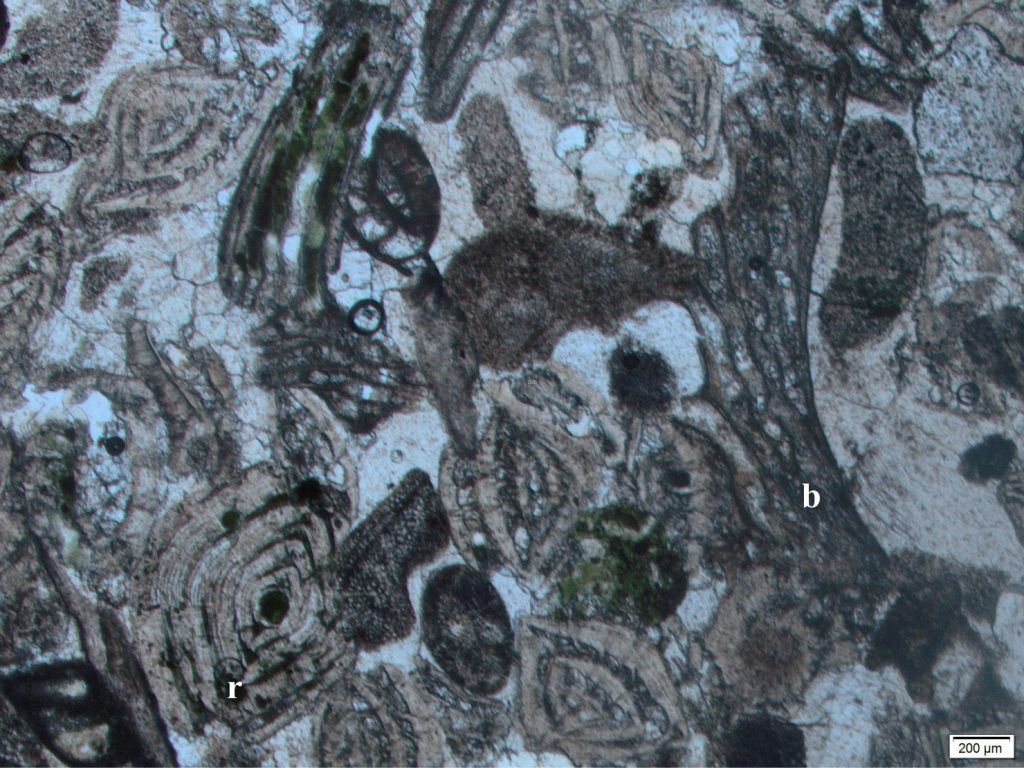
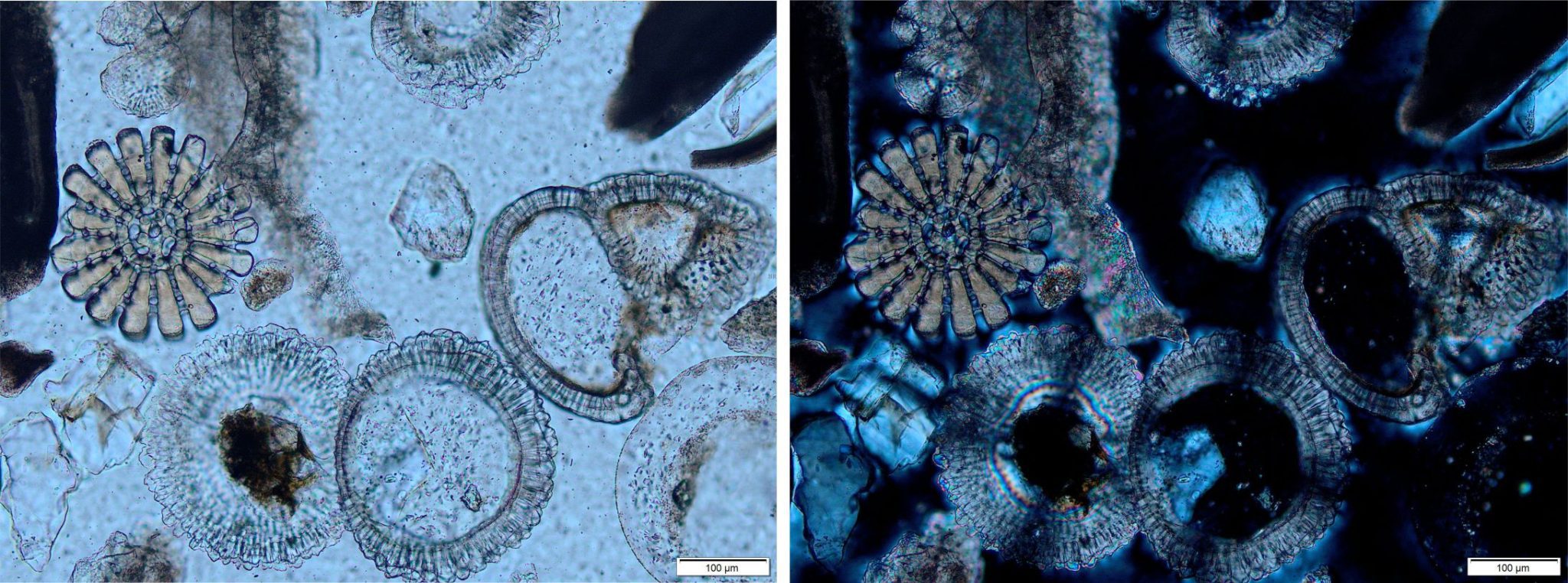
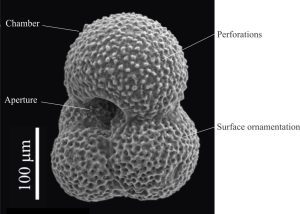
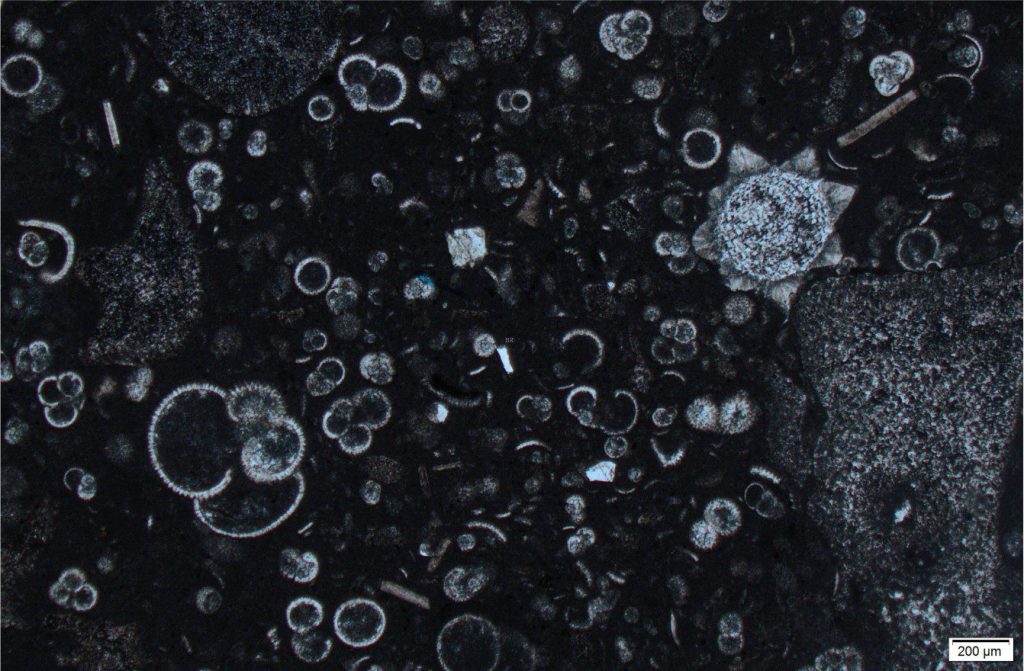
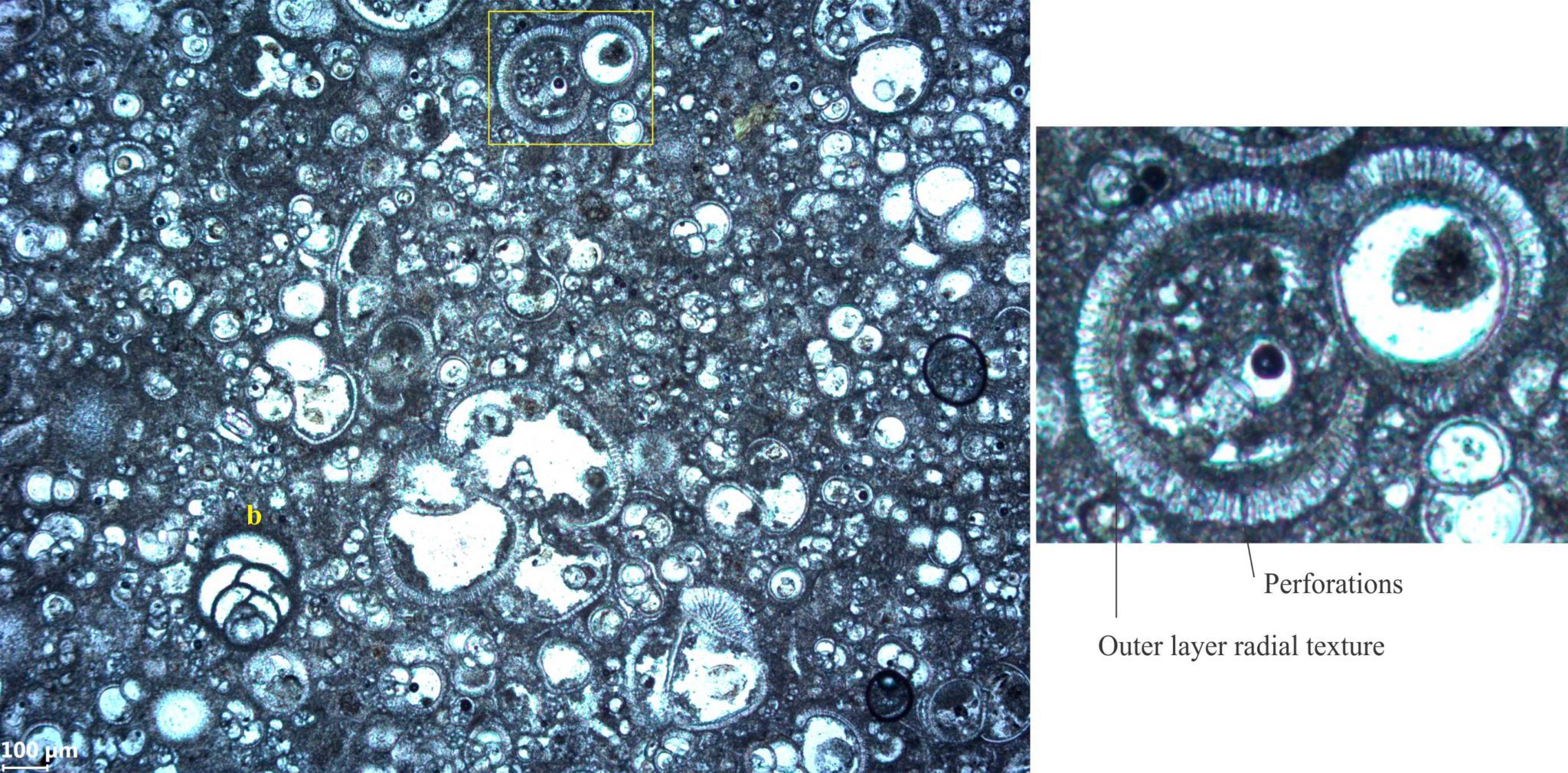
Fusulinids are an order that died off during the end Permian mass extinction. The walls of this group consist of microscopic, equigranular calcite. Many, but not all, are perforate.

Miliolids Porcellanous (smooth and commonly shiny) – This group has walls constructed of high-magnesium, acicular to equant calcite crystals, generally lacking preferred orientation. Tests are imperforate (cf. the Fusulinids).

Sponges
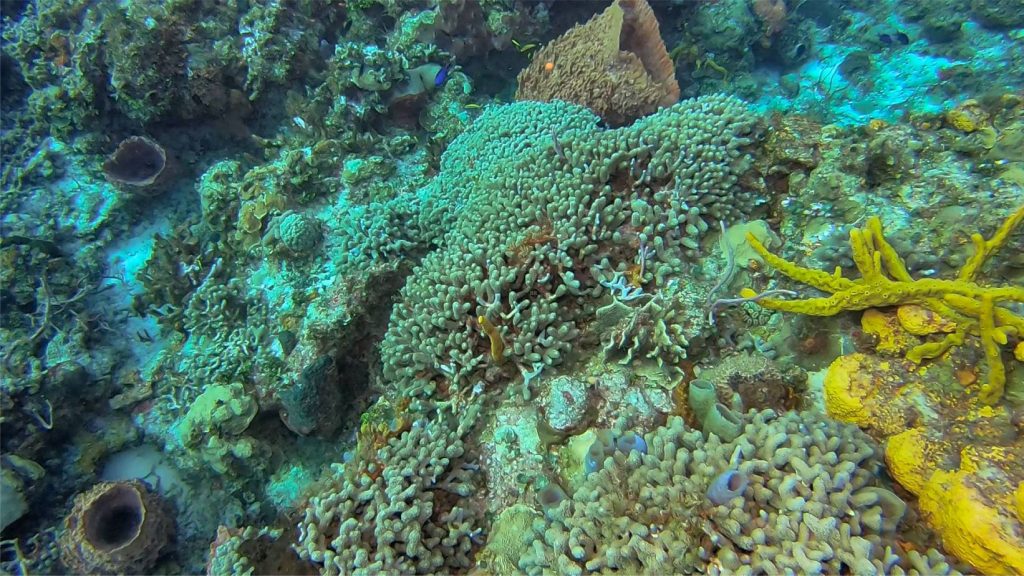
Sponges (phylum Porifera) are the simplest of multicell invertebrates. They survived multiple extinction events since the Cambrian; there are hints that they may have evolved during the late Precambrian. Most forms have an internal scaffolding-like skeleton made up of solid rod-like structures called spicules (or sclerites), that are bound together to form a semi-rigid framework, around which the spongin grows and is structurally supported (spongin, as in a bath sponge, is an insoluble protein). The spicules are composed of amorphous silica (opal-like), or high-magnesium calcite – the former are more common. Siliceous sponges are also called glass sponges. Spicules also focus light in much the same way as optic fibres – an interesting discovery. The spicules disaggregate when the animal dies. Sponge taxonomy is based primarily on spicule geometry.
Sponge spicules come in many shapes, usually less than a few millimetres long. They occur as single rays, pointy at the growing end, or as complex architectures that radiate from a central point. Each species has a unique spicule size and shape. Calcareous spicules (Calcarea) are single crystals. Siliceous spicules have a central canal.
All spicules are prone to recrystallization during burial diagenesis, partly because of their composition (the amorphous silica will recrystallize to quartz), but also because of their relatively high surface area. Siliceous spicules may also be replaced by carbonate and in the process provide an important source of dissolved silica to ambient geofluids.
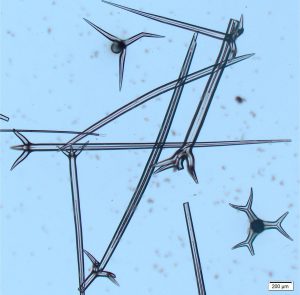
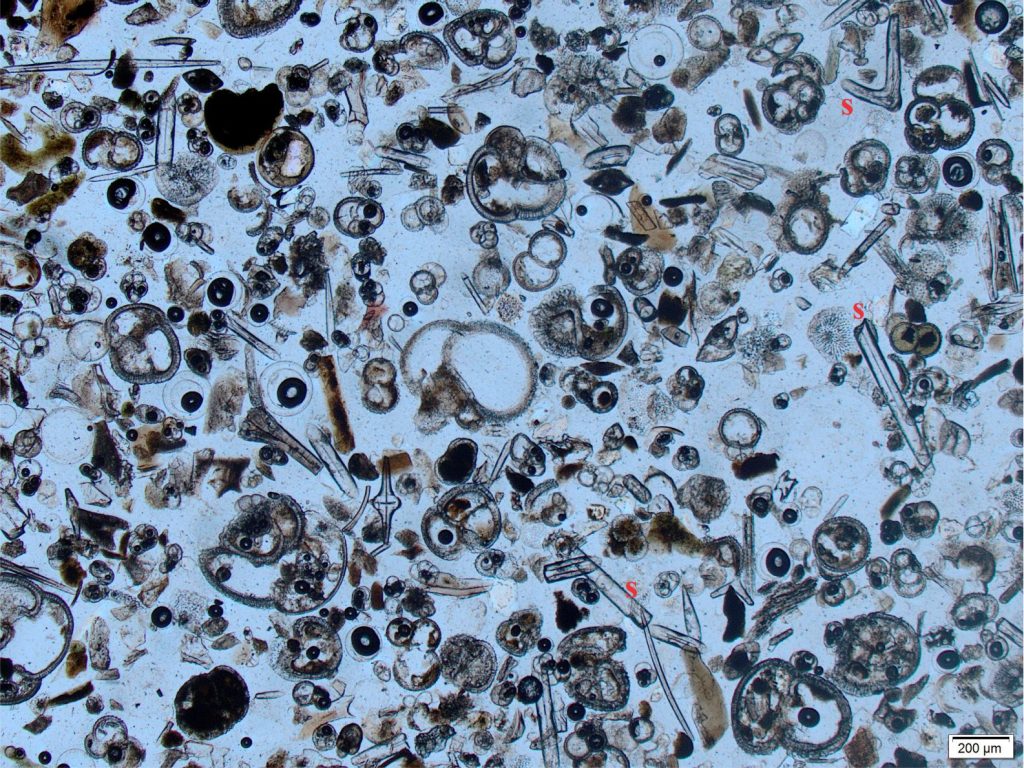
Acknowledgement
Many thanks to Kirsty Vincent, Earth Sciences, Waikato University for access to the petrographic microscope.
Other links
https://foraminifera.eu/about.html Lots of info and images on forams
R.G.C. Bathurst, 1976. Carbonate Sediments and their Diagenesis. Always worth a read
SEPM STRATA has a good section on forams
Other posts in this series
Brachiopod morphology for sedimentologists
Bivalve shell morphology for sedimentologists
Gastropod shell morphology for sedimentologists
Cephalopod morphology for sedimentologists
Optical mineralogy: Some terminology
Carbonates in thin section: Bryozoans
Carbonates in thin section: Echinoderms and barnacles
Carbonates in thin section: Molluscan bioclasts
Neomorphic textures in thin section
Mineralogy of carbonates; skeletal grains
Bivalve morphology for sedimentologists
Mineralogy of carbonates; non-skeletal grains
Mineralogy of carbonates; lime mud
Mineralogy of carbonates; classification
Mineralogy of carbonates; carbonate factories
Mineralogy of carbonates; basic geochemistry
Mineralogy of carbonates; cements
Mineralogy of carbonates; sea floor diagenesis
Mineralogy of carbonates; Beachrock
Mineralogy of carbonates; deep sea diagenesis
Mineralogy of carbonates; meteoric hydrogeology
Mineralogy of carbonates; Karst
Mineralogy of carbonates; Burial diagenesis
Mineralogy of carbonates; Neomorphism

















